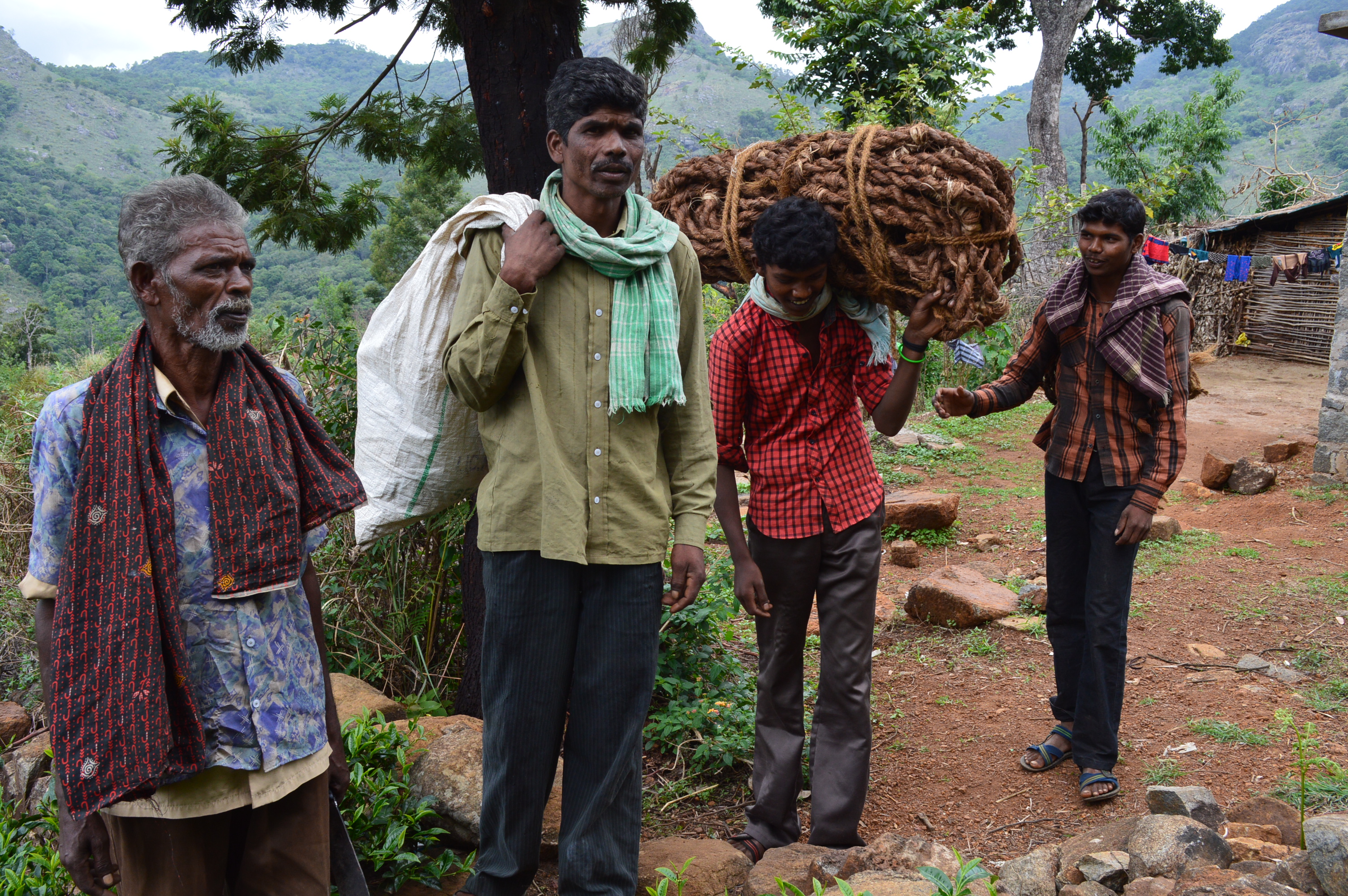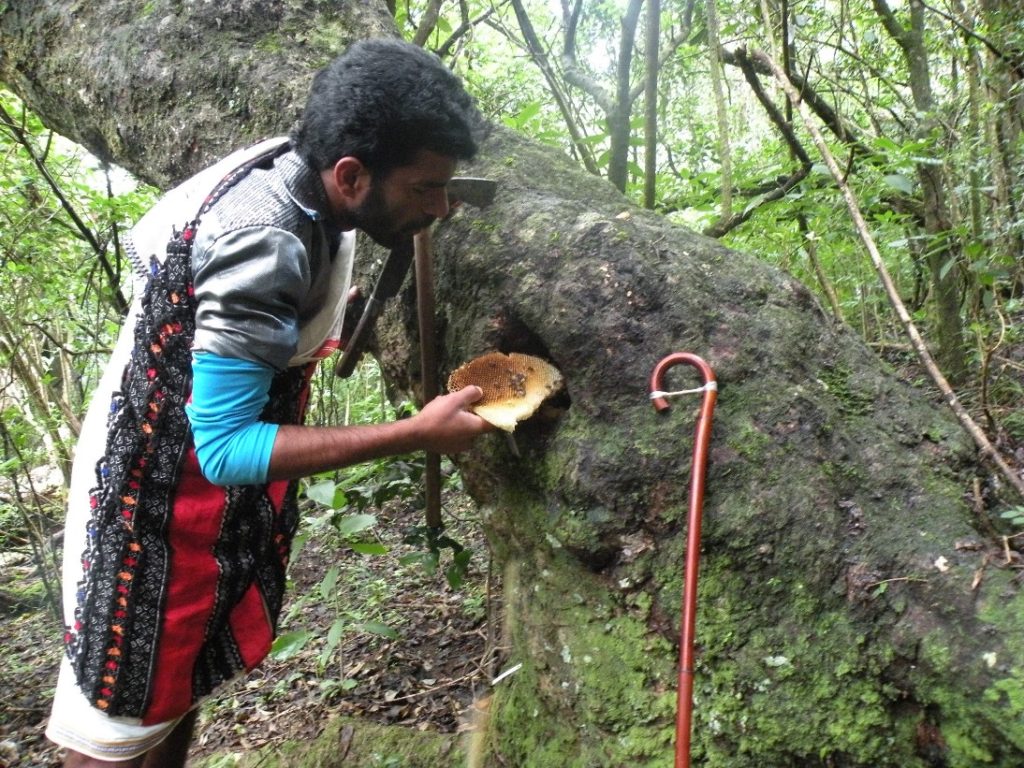
The Kurumba community of Tamil Nadu are categorized as a Scheduled Tribe and are included in the list of Primitive Tribal Groups (PTGs). As per 2001 census, the total population of the Kurumbas is 5498 (2707 males and 2791 females) and their literacy rate is 49.03 per cent. “It is possible that their name originated from the Tamil word ‘kurumbo’ (mischief) because they are said to be very mischievous”. Kurumbas are identified as having five distinct ethnic subcategories in the Nilgiri district on the basis of region of residence, language spoken and variety of cultural traits. These groups are Alu Kurumbas, Betta Kurumbas, Jenu kurumbas, Mullu Kurumbas and Urali Kurumbas.
Alu Kurumbas are found in the taluks of Coonoor and Kotagiri, Betta Kurumbas and Jenu Kurumbas inhabit Mudumalai Sanctuary, Mullu Kurumbas are found in the Pandalur taluk whereas Urali Kurumbas are distributed in the taluks of Gudalur and Pandalur. The Kurumba settlement is called Mottam, and is a cluster of many huts inside the forest,. They are non-vegetarian in food habit. Kurumba practices small game hunting and are extremely skillful in collecting rock bee (Apis dorsata) honey. They make their own fibre/vine/bamboo ladder to climb high cliff and trees in order to collect rock bee honey. The ritual of self-preparation before honey collection is elaborate and strictly adhered to even today.
Originally, animists and totemists, the Kurumbas now follow mainstream Hindu religion and worship “Kumba devaru” and “Karupade thayi”. Kurumbas pass on their folksongs, stories, riddles and rhymes orally through storytellers and musicians. The Kurumbas share a common musical culture with other Nilgiri tribes. Bamboo pipes (kuvalu and bugiri), monofaced drums (tambatte) and two faced drums (are) are popular instruments. Themes are either balladic or associated with death and marriage rituals. In dance, there are two kinds: the gandesa attam is performed by the men while the slower version yen attam is performed by the women. .
Kurumbas women practice body tattooing. The Kurumbas were traditionally hunters, forest food gatherers, and shifting cultivators and now have adapted to working as labour in coffee, tea and vegetable plantations. Some Kurumbas have also become experts in basket weaving. Traditional Kurumba art called Ajile Bottu depicts their beliefs, rituals, hunting techniques and daily village life. Today, the Kurumba youth are reviving this art form which is being well received by the public.
Sources: Nath et al. (2007). Honey Trails in the Blue Mountains. Keystone Foundation
